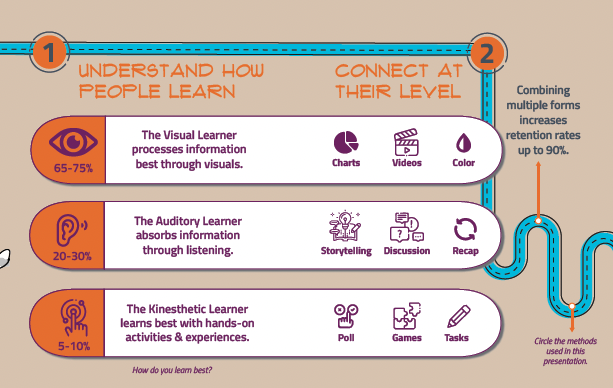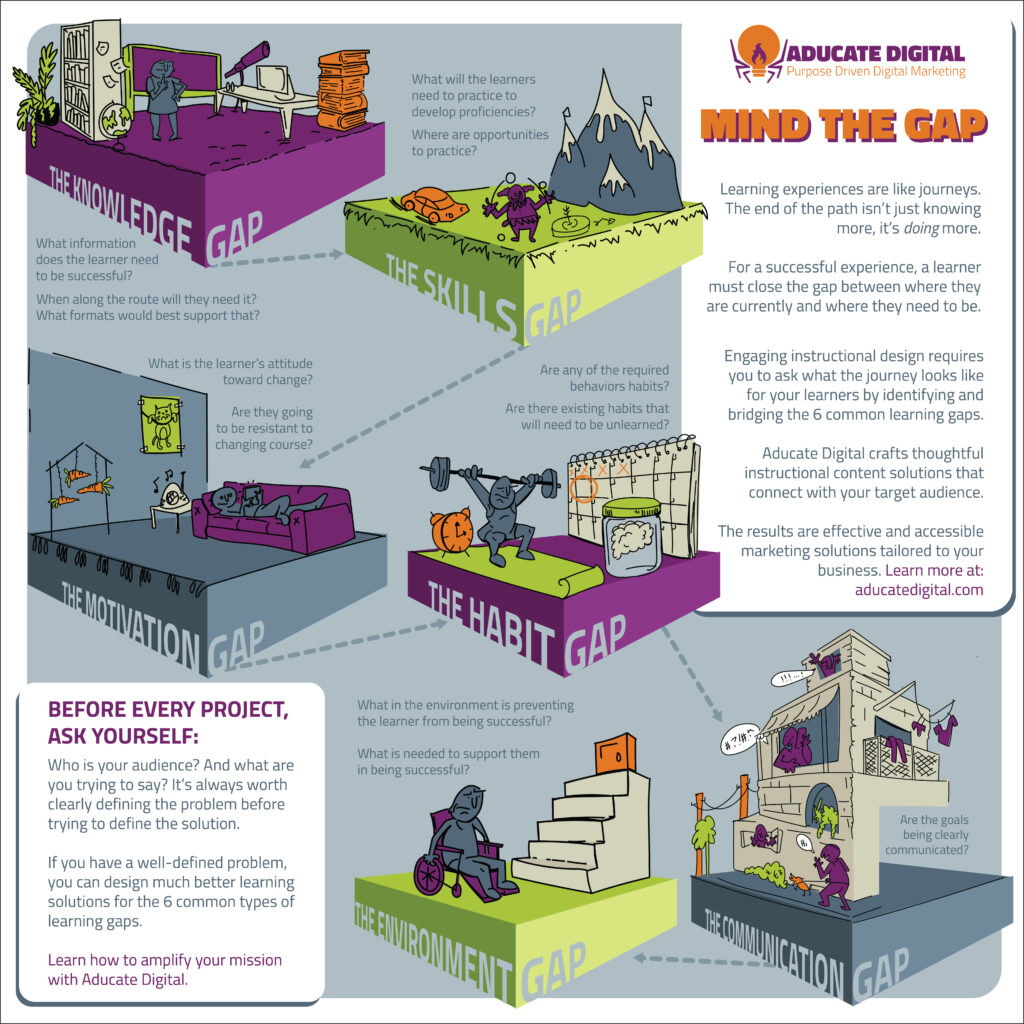Are you in the early stages of your business? Do you attend webinars hoping to advance your skills? Have you ever hopped off the video call and questioned why webinars (usually) suck? If so, you’re in the right place.
This blog topic came from a conversation I had with the talented Kathleen Hackney of Fayre Marketing. If you’re looking for email marketing and customer retention solutions, check out her stuff! https://www.fayremarketing.com/.
We recently met up for lunch and commiserated on why webinars always seem to fall flat. They’re a weird artifact of the pandemic that continues to miss the mark. They might have been a necessary evil during lockdowns, but I’m not sure why the format continues today.
Between webinars, we’ve also attended a number of networking events around the Austin area. As the economy shrinks, business owners are seeing the value of networking to sustain their business. I noticed an odd pattern: almost everyone at these events said they were looking for more speaking gigs and webinar opportunities.
While that is an admirable goal, the instructional designer in me wants to share some tips to improve your next hosting gig. So, without further ado, here is Aducate Digital’s Public Service Announcement on your Webinar Survival Guide.
An Inaccessible Format
Think about the last webinar you attended. What made it fall flat for you? Did you go in expecting to learn something but found the presenter gave you surface level info you could have Googled on your own? Or was it on the other end of the spectrum: information overload meant to bamboozle you?
I’ve worked with clients who are adamant in the strategy of purposely confusing the attendees to position themselves as the only solution. I’m begging you, dear reader, if this is your strategy: STOP IT. This is not the way.
Ultimately webinars fall flat because they are inaccessible. This accessibility issue can be grouped into three categories:
Webinar Pitfall 1: The host was unprepared.
I don’t mean the technical difficulties. Shit happens. Tech goes wrong. You roll with it. What I mean by an unprepared host is a host who didn’t think about the attendees. The host neglected to consider how the target audience processes information. The video call format is miserable for this – I get it. As the host, you see 50 people on the call from around the nation. People turn their cameras off so you can’t see their face. It’s hard to tell if they’re following along or distracted by their phones. You don’t know what their experience level is with this information. And you hope for the best.
Rest assured; I do have solutions for this.
Webinar Pitfall 2: The Content was Under/Overwhelming
To be fair, perhaps both sides need to mitigate some expectations. As an audience member, we attend a webinar because we want to learn from an expert in their field. But, realistically, what can they really teach us (for free) in 50 minutes? The host likely feels they need to water down their subject matter to make sure most people understand.
Again, I have a solution.
Webinar Pitfall 3: The host made themselves the hero
This is the most offensive one. The host spends 50 minutes using the webinar as a sales pitch. The attendees are not here for that. We’re not looking for another hero. Attendees are looking for an expert who can guide them by providing the steppingstones to solving a pain point. Or help us see the problem from another angle. As soon as it’s clear the host is there to sell something, attendees will tune out.
Ok – so we’ve identifies what can make webinars go south. Now, let’s improve it.
Webinar Survival Guide Tip 1 and 2: Think Like a Teacher
All of the solutions I am going to share fall under the term Instructional Design. That’s where I started my career.
Story time
When I was in college, I did an internship at the Great Lakes Science Center in Cleveland, Ohio. I was tasked with leading a group of kindergartners in owl pellet dissection. If you’re not familiar with what those are, I’ll explain.
Owls eat rodents and other animals. They can digest the muscles and the organs, but they can’t digest the fur and bones. They throw up the hair ball and you can find these things on the forest floor. You can pick apart the pellet to find the bones and try to figure out what animal the owl ate. It’s an alternative to frog dissection.
Remember, these were kindergartners. They were freaking out because they thought they were touching poop. I don’t know that telling them “no, it’s just vomit!” was any better…but once I was able to get them past that first hurdle, we ran into another. The students could not wrap their heads around the fact that the bones they were finding belonged to the rodent. They thought they were finding the owl’s bones.
I took this information back to the science center organizers and they responded with, “well, we just won’t do this activity for this age group anymore.” And I said, “hang on a second! That’s not the right answer. We shouldn’t be taking away a learning opportunity. Maybe we can change how we teach it.”
So, that’s what I wrote my thesis on. I wanted to figure out the different ways people learn and how to engage with them.

How We Learn
To improve your webinar hosting skills, you need to understand how people learn. We learn in three ways:
- Visual Learners processes information best through visuals. 65-75% of the population are visual learners
- Auditory Learners absorbs information best through listening. 20-30% of the population are this type.
- Kinesthetic Learners learns best with hands-on activities and experiences. 5-10% of the popular learn this way.
Take a minute to think about how you learn best. What format helps you retain information?
There are also different methods of engaging with each learning style. For the visual learner, you can use charts, videos, and color coding. The auditory learner appreciates storytelling, opportunities for discussion, and recapping the information. The few folks that are kinesthetic learners need polls, games, and tasks to keep them engaged.
Truth is, no one learns in one specific way. We’re all multi-modal learners. You may have a preference for one style over another but when instructors combine multiple forms of engagement, retention rates increase to 90%. By this I mean, when you work to engage multiple learning types, with multiple engagement styles, you are ensuring the attendees will understand and retain your message.
Webinar Survival Guide Tip 3: Bridge the Barriers to Entry
I talked about the early dates of my career. Zooming forward to my last office job: I was the Digital Marketing Specialist for a healthcare organization that provided therapy for children on the autism spectrum. We served parents who recently received a diagnosis for their child. Their ears are ringing; they’re overwhelmed with emotions and looking for guidance. My job was to create the brochures and informational packets that walked them through the next phases of this journey.
Our company also acquired smaller clinic spaces. So, on the other end of my job, I would help those business owners get out of their marketing contracts and transition them into our systems. For example, shutting down their website and getting them onto ours.
In both scenarios, I realized that not only do we process information in different ways, but people also have different barriers to entry. Learning experiences are like journeys. The end of the path isn’t just knowing more, it’s doing more.
For the children, they have physical and skill-based barriers. For the business owner, they had communication and knowledge-based barriers. At Aducate Digital, we work to bridge the knowledge-based barriers business owners have when it comes to marketing.

Avoid the Webinar Pitfalls
The lecture style of webinars mean they cater to the 20% of the population that prefer the auditory style. So, if you have 50 attendees, you’re lucky if 10 people in the room are following you.
To make things worse, the host doesn’t implement any methods of engaging this type of learner. The slides are full of 5 pt. text too small for anyone to read. And the host will read word-for-word what’s on those slides. Presenting this way means you’re excluding the other 80%. You’ve made your content inaccessible.
In addition, webinar hosts who make the presentation a 50-minute sales pitch are completely ignoring the attendees. We’re not here to learn about how great you are. We want to know how your expertise can help solve our pain point. When it’s clear you’re not going to solve my problem, I’m tuning out.
The Point
Even if you have no plans to host a webinar any time soon, these tips are helpful for marketing in general. The point of this post is that: there’s no one-size-fits-all approach to sales and marketing.
If you want to grow your small business, you need three things:
- Know yourselves. Really understand your unique value proposition. And don’t just tell me “You really care about your customers.” Every business does. That’s not your selling point.
- Deeply understand your target audience. How do they make decisions? Who do they trust? What will make your brand stand out in their mind?
- Stay silly and give a darn. Work to solve your prospects pain point. Put them at the center of your story. And I can guarantee you’ll connect and convert them into a client.
Want More?
I could talk about instructional design for days. I find the psychology of how people learn fascinating. But this blog is long enough.
If you still want more and are tired of me, here are three resources to dive deeper:
- For the visual learner, I encourage you to look up a term called “Nuclear Semiotics.” It’s a design thinking challenge. In short, it’s a system of symbols that warn people thousands of years from now about dangerous waste. How do you communicate to someone who has no frame of reference from yours?
- For the auditory learner, I’d recommend a podcast called “Inner Cosmos with David Eagleman.” This series explores the relationship between our brain and our experience.
- For the Kinesthetic learner: the next time you are in the airport (and not stressed out), I encourage you to really think about how you get from your gate to baggage claim. Aside from the wayfinding graphics and icons on signs, really think about how the airport is laid out to herd you from point A to B. There are thousands of other people in the same location; all speaking different languages; and different levels of experience with flying. Somehow the airport has figured out how to ensure the same problem is solved. And that means, there’s hope for your next webinar as well.

